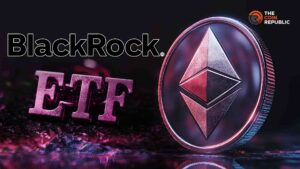Bitcoin Dominance Hits 54%: Is an Altcoin Season Coming for ETH & SOL?

Bitcoin’s Steady Rise: Are We on the Brink of an altcoin Supercycle?
Bitcoin’s Unexpected Surge Amid Market Skepticism
Bitcoin (BTC) has recently made headlines by reaching a new all-time high on May 22, a phenomenon some analysts, including Gregory Mall from Lionsoul Global, have referred to as the “most disliked rally.” This upward movement occurred despite low trading volumes and a general sense of doubt in the market, surprising many traders. Currently, Bitcoin is stabilizing around its peak, with recent figures indicating it is trading within a narrow range of $106,766 to $108,746. In contrast, the altcoin market presents a different picture, with major players like Ethereum (ETH) and Solana (SOL) still about 20% and 30% below their highs from November 2021. This disparity has led to an increase in Bitcoin’s market dominance, which has risen to over 54%, a notable jump from approximately 38% at the end of 2022. For traders, this metric serves as a vital indicator, as historical trends suggest that peaks in Bitcoin dominance often precede significant capital shifts into altcoins.
Institutional Interest and Supply Constraints Driving BTC Growth
The recent strength of Bitcoin can largely be attributed to a surge in institutional adoption. The approval of spot Bitcoin ETFs in the U.S. has unleashed a wave of investment, with net inflows exceeding $16 billion year-to-date. May alone saw the highest monthly inflow of the year, largely due to fee-sensitive channels such as Registered Investment Advisors (RIAs) and private wealth management. This demand is creating a notable supply crunch. Financial expert Kevin Tam notes that ETFs and corporations acquired around 750,000 BTC last year, while miners only generated 164,250 new bitcoins. This indicates that demand from these sectors has outpaced new supply by a ratio of more than four to one. This trend is not limited to the U.S.; recent filings revealed that Trans-Canada Capital, which manages Air Canada’s pension funds, invested $55 million in spot Bitcoin ETFs. This institutional accumulation, combined with a favorable macroeconomic outlook anticipating Federal Reserve rate cuts, has provided a strong boost for BTC, even as other risk assets face challenges.
Signs of an altcoin Revival: Ethereum and Solana Gaining Momentum
Historically, the current market dynamics may be setting the stage for a notable altcoin rally. Previous cycles in 2017 and 2021 demonstrated that altcoins typically begin to outperform Bitcoin two to six months after BTC reaches a new all-time high. Early indicators of this shift may already be emerging. Ethereum has experienced a robust 81% increase since its lows in April, currently trading around $2,515, with a 3% rise in the last 24 hours. According to Vivek Raman of Etherealize, growing regulatory clarity has been a key driver for ETH. Legislative developments like the GENIUS Act are helping Wall Street recognize Ethereum’s fundamental value as the backbone for tokenized assets and stablecoins. Meanwhile, institutional interest in other Layer 1 solutions is on the rise. VanEck’s proposed Solana ETF has recently appeared on the DTCC website, marking a significant step toward its listing. With SOL trading strongly at $157, up over 3.6% in the past day, and Canadian Solana ETFs already operational, the framework for institutional investment in leading altcoins is clearly expanding.
Strategic Trading in a Maturing Bull Market
For traders and financial advisors, the current market landscape calls for a sophisticated approach. The trend of capital moving from large-cap assets to mid-cap ones, commonly seen in traditional bull markets, is mirrored in the crypto space, where funds shift from Bitcoin to Layer 1 projects and subsequently to smaller ventures. The resurgence of Decentralized Finance (DeFi), with Total Value Locked (TVL) exceeding $117 billion according to DeFiLlama, indicates a revival in on-chain activity and utility. As Gregory Mall suggests, diversifying through equal-weight or thematic baskets can help capture this broad potential. However, it is essential to remain grounded in fundamentals such as network activity and developer engagement. The overall economic environment remains precarious, as highlighted in a recent OECD report. Cryptocurrencies continue to behave as risk-on assets, susceptible to global economic pressures. Recent declines in the S&P 500 and Nikkei 225, driven by geopolitical tensions, serve as a reminder that cross-market correlations can heighten risk. Therefore, while the prospect of an “altseason” is enticing, disciplined risk management is crucial.







